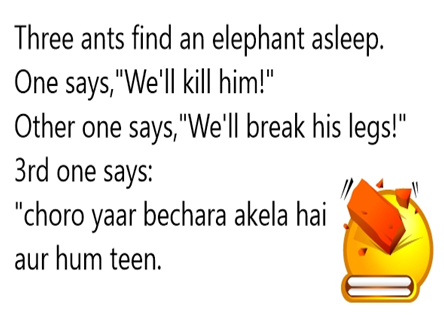

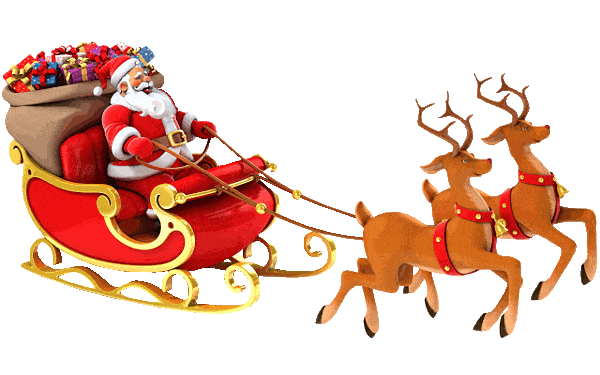
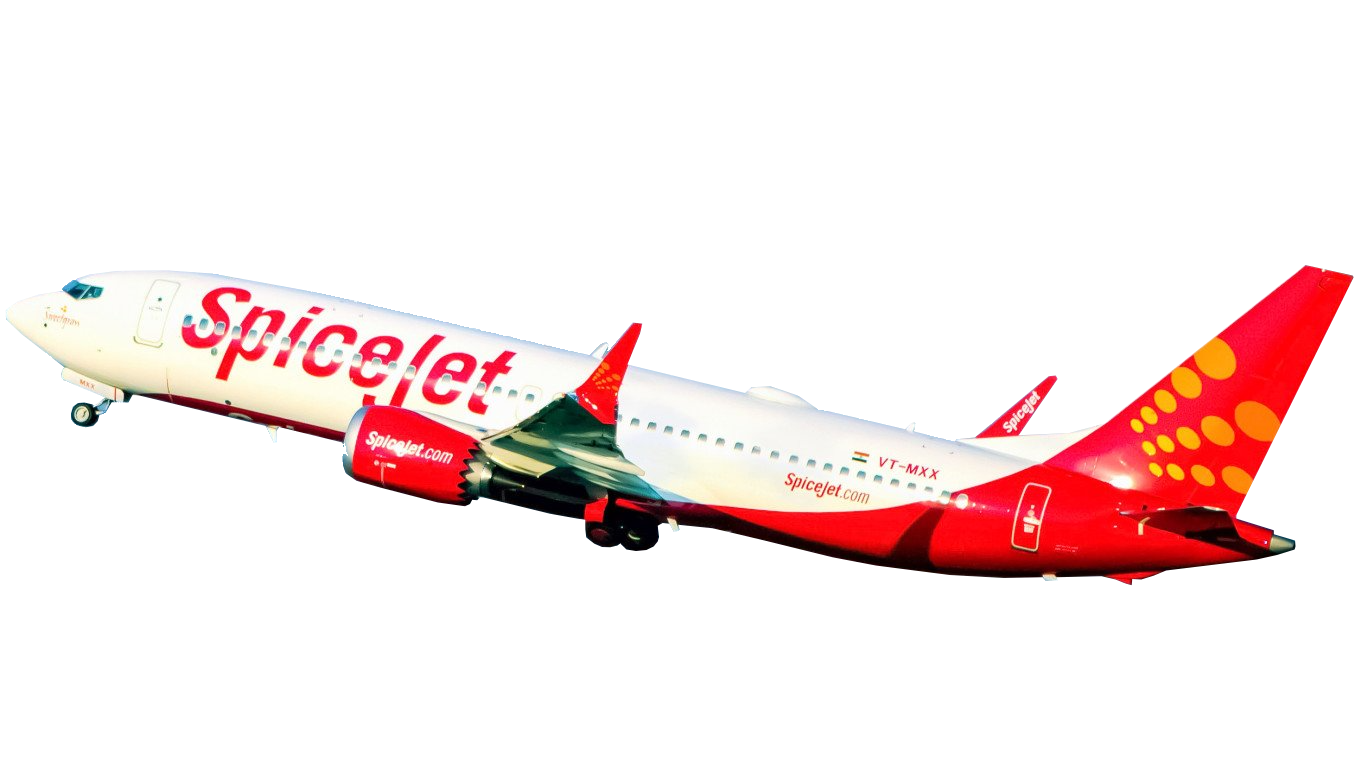
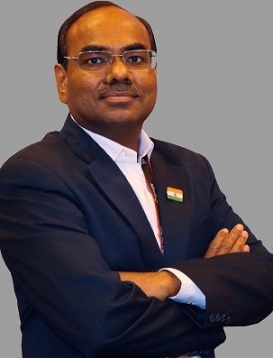
Dear Smiling Teammates,
With great Joy and Happiness we welcome you to the season of ‘Thanks Giving’. I am sure you must have expressed your gratitude to everyone who has contributed to the wellbeing, success and day to day living of yourself and your family. This season teach us to help each other and spread happiness around us. Let us keep the momentum of happiness and joy at work and at home.
Christmas will be celebrated all over the world and lot of people will undertake their winter holiday travel. Let us ensure that every passenger who travels with your airline gets the delightful travel experience with us.
We say ‘First Impression is the last Impression’ and Grooming is the secret of real elegance. Our grooming communicates a lot about us. In this December 2022 Edition of our magazine we will talk about ‘Grooming’ under ‘Nurture your talent’ series and will showcase why ‘Grooming’ is important in customer service as well as for individual personality development.
Our section ‘Hot Shots’ will showcase short videos shared by our team members and will make you enjoy with us. Keep Smiling☺.
In this Spicy journey we take you to the southern part of India and will showcase ‘Kozhikode’ also known as ‘City of Spices’ under ‘My City My Place’ series, and will tell about its culture and history. Enjoy the great experience knowing more about the rich culture of the city and places to visit.
We were glad to see our team members participating in SpicyReflection Quiz and also would like to congratulate Mr. Naveen Pathak from GSD-HO team for winning the SpicyReflection Quiz (November 2022 Edition). We wish all the best to all the other participants.
We need to continue our focus on service with Eye contact, Smile and Greetings at all the customer touch points. Keep sharing Happy moments with our customers as it also enlightens the team morale and we congratulate each one of you for your great efforts. Please keep it up!
We are sure you will enjoy this edition of SpicyReflection filled with knowledgeable and interesting facts. Please do share your feedback/ideas for the next edition. Also enjoy our fun filled social media page “SpicyReflection” on Instagram, Facebook and YouTube.
Merry Christmas and Jingle All the Way!!
Keep Reading and Sharing!!
Jai Hind!
Your Captain
GP Gupta
Grooming is the secret of real elegance and success
Proper grooming and professional appearance are important to gain not just positive impression but also respect in the workplace. First impressions matter and the way you look and carry yourself creates an impact on people around you in professional setting. An impression a passenger or other people in the surroundings carries of the company, is what you set being the Brand Ambassadors of the company.
REMEMBER, YOU ONLY HAVE ONE OPPORTUNITY TO MAKE A POSITIVE FIRST IMPRESSION!
Proper grooming and professional appearance is important to both men and women. Lack of these may lead to poor image interfering with your chance of getting good impression and positive feedbacks from your passengers, workmates and superiors.
Maintaining personal hygiene is necessary for many reasons like Personal, Social, Health, Psychological or simply as a way of life.
Keeping a good standard of hygiene helps to prevent the development and spread of infections, illnesses and bad odour.
Hygiene is best thing that takes care of our health.As we know that health is wealth, so to generate this wealth all the time we should take care of personal hygiene.
Grooming Standard
What Is It?
Skills, experience and qualifications are important, and so is our grooming. Our appearance is a statement of who we are. Our grooming should create a professional image at work and we have to be attentive to our appearance and posture. It is to project an image of organization’s culture and ethics to our esteemed customers, guests and others. It also enhances the personality of employee, character of an organization and value of the company.
Why Is It Important?
First impression that will create lasting impression. As our grooming communicates about us before we open our mouth, it is essential to make ourselves feel good and confident. If we feel good about ourselves, everything goes better.
In a corporate and a professional work-place, image and impression play an important role. How people perceive and see you is a lot to do with whether they like you and want to work with you or not. Hence, professional grooming is important. How you carry yourself, how you dress, what you speak, how you conduct yourself is no doubt, important! Professionals need to understand that grooming themselves will not just build their personality but will give them confidence and the ability to create that right impression.
1. Your clothing and grooming affect the way you think
When you appear authentic, attractive and appropriate, you think more positively about yourself, your situation and others.
2. Your clothing and grooming affect the way you feel
A positive personal appearance is a fast, effective way to boost self-confidence and overcome anxiety regarding ability or acceptance.
3. Your clothing and grooming affect the way you act or behave
A positive personal appearance is one of the most effective ways to improve behaviour and enhance performance level or productivity.
How Can We Do It?
We can keep ourselves looking fresh and professional by following our grooming standards and paying a good attention to:-
a) Our dress and/or uniform
One of the most important things is to dress correctly at work place. Clothes affect mannerisms. Our clothing should complement us for who we are. We may not want to make a fashion statement but it is important that we are well-dressed. Our uniform is our pride. It is our individual responsibility to wear the uniform with pride and carry it with elegance, poise and professionalism. Uniform should be well fitted (as per the grooming guidelines), neatly ironed and names batches are properly displayed. Shoes should always be well polished and shining.
b) Our hair: - Maintain a neat hairstyle. Men should keep their hair short. Women should also style their hair appropriately. Avoid loud hairstyles. Keep it simple and elegant. (As per the grooming guidelines). Overall look should be elegant rather than funky.
c) Body Fragrance
It is also important to smell good. Use a good perfume or a deodorant.
d) Expression and Body Language
In the workplace setting, as you meet Passengers/ Clients, bosses, team members, always wear a smile. Everyone has their own share of problems but the best thing you can do is to appear like you have no issues. No one ever wants to stick around gloomy people. Maintain a good body posture. Avoid slouching when sitting, ensure that your back is straight.
e) Make-up
Women should regularly go for waxing, manicure, pedicure and get your eyebrows done for a defined look to look neat and sharp.
f) Nails
Nails should be neat, clean and properly trimmed.
g) Breath
Good oral hygiene is one of the most fundamentally important grooming tip.
Always keep a hand sanitizer, a moisturizer and a face wash with you apart from make-up essentials, as applicable, and apply before you go for a meeting, as per grooming standards.
Our personal conduct reflects our inner being and what we feel about ourselves within. In the subconscious, we need to feel that we are important to an organization and that we have the will and the confidence to take our organization to another level. This, in turn, comes from how well we are accepted by our team members and one of the things that this depends on is our personal and professional grooming.
These are some of the grooming tips that will surely help you to propel your career!
Carry yourself in such a way that when people are sitting, your stature will be standing!
&
When they are standing, your stature will stand out.
&
When they stand out, your stature will be outstanding!
&
When they dare to be outstanding, your stature will be their STANDARD!



Stop Worrying
Worry is a destructive and unhealthy mental habit. Worry can cause health problems and even shorten your lifespan. Worry is dangerous also because when you fear something for a long time, you can actually draw it to you, helping the fear come to pass.
Worry is a habit, and because you can change any habit, you have the ability to break the worry habit. There are three steps to this process:
1. Believe you can: With God’s help, you can do whatever you believe you can do.
2. Empty your mind: Think of it as emptying a bathtub after removing the stopper, or imagine reaching into your mind and plucking out the worries one by one.
3. Refill your mind with positive thoughts: Since your mind won’t stay empty for long, you have to refill it with positive thoughts, such as courage, faith, and hope.
I can relate above with my experience with this company referring Dec, 2014 crisis. I was based at Delhi station and suddenly all operations came to halt, had no clue what was happening and going to happen in coming days. Worry and anxiety level started increasing, thinking is this the end of my job? How will I take care of my family? Thinking this I sat in one corner and left everything on God to help, relate to above point 1, and believe you can.
Next, I removed all worry and anxiety from my mind, this relates to point 2, empty your mind. After removing all negative thoughts I refilled my mind with positive thought of hope and faith that nothing will happen with all of us and we all sailed out from darkness to bright light.
So stop worrying, focus on positive thinking and believe in GOD!
By Mr. Nawal Kishore (Deputy General Manager – Ground Services)
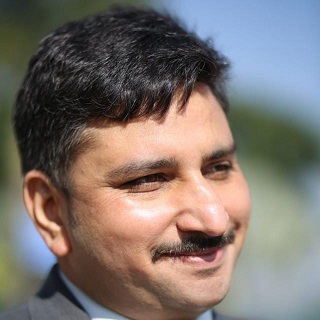
The Boeing 737 is a narrow-body aircraft produced by Boeing at its Renton Factory in Washington. Developed to supplement the Boeing 727, the twinjet retained the 707 fuselage width and six abreast seating.
Envisioned in 1964, the initial 737-100 made its first flight in April 1967 and entered service in February 1968 with Lufthansa. The lengthened 737-200 entered service in April 1968, and evolved through four generations, offering several variants for 85 to 215 passengers.
The 737-100/200 are known as originals, 737-300/400/500 as classic, while the upgraded 737-600/700/800/900 variants are known as NG (Next Generation.) have a look ……
The 737 Original – the 737-100 and 200
One of the main features of the first 737s was, in fact, two engines. This was a driving motivation in the development of the 737. The preceding Boeing aircraft, the 707 and 727, had both been very successful. But market attention had shifted to a more economical two engine variant. Boeing got ahead of the competition by placing the two engines of the 737 under the wing, as opposed to mounted at the rear of the fuselage. Critically, this allowed for a wider fuselage, giving the 737 extra passenger capacity (six across as opposed to five), and allowed for standard freight containers to be loaded. Only 60 737-100 aircraft were sold, and it was soon improved with the 737-200. This offered an extended fuselage, requested initially by United Airlines, and proved very popular (with 1,095 sales). There was also an advanced version, with improved aerodynamics, more powerful engines, and higher fuel capacity and range.
The 737 Classic - the 737-300, 400 and 500
Production of the ‘Classic’ series started with the 737-300 in 1984. The aim was a transformation focused on increased capacity and better fuel efficiency. The family would be modified but keep commonality (in both design and flight operation) with earlier models.
The main difference was adding new engines. The 737-300 uses CFM56 turbofan engines. This increased thrust (up to 23,500lbf compared to 16,400lbf for the Pratt & Whitney engines on the 737-200), but led to a few design challenges. The larger engine diameter, and low ground clearance of the 737, meant they were placed ahead of the wing.
The 737-300 offered a small increase in capacity (up to a maximum of 149 compared to 136 for the 737-200), from an extension of the fuselage around the wing. Other structural improvements included:
• An increase in wingspan and extension of the wingtips, offering improved aerodynamics
• Redesign of the tailfin
• Several cabin improvements (based on features developed for the Boeing 757)
The 737-400 continued this expansion. Stretching the 737-300 around three meters increased the capacity to 188. In contrast, the 737-500 was a smaller model. This went back to the size and capacity of the 737-200 but offered improvements in the design and efficiency of the Classic series.
The 737 Next Generation – the 737-600, 700, 800 and 900
The Next Generation (NG) series was launched in 1993 (first flying in 1997). This came about mainly to address growing competition from the Airbus A320 family, and high fuel prices at the time.
The series offered several improvements over the Classic aircraft, including better fuel efficiency, extended range, and larger capacity variants (up to 215 passengers). Changes to the aircraft included:
• Upgraded CFM56-7 series engines, with improved fuel efficiency
• A redesigned wing, with increased span and area (and allowing increased fuel capacity)
• Improved digital cockpit
• Interior cabin improvements, including larger bin space (with several updates based on 777 designs)
The 737-600 is the smallest of the family, with a capacity of 149 passengers. The 737-700 is stretched by around 2.4 meters, and also offered a convertible cargo option, the 737-700C.
The 737-800 is stretched further than the 737-700, making it a good replacement for the 737-400. It takes passenger capacity up to 189. This is increased further on the longest model – the 737-900ER, with a capacity of up to 220 passengers (the 737-900 is limited to 189 due to only having one less set of exit doors).
The 737-800 has become Boeing’s best-selling 737 model. It offers an excellent combination of range and capacity, not the largest of either, but a very versatile option for many airlines.
In the next edition we will speak about B-737-8 Max Aircraft
By: Pradyumna Sharma
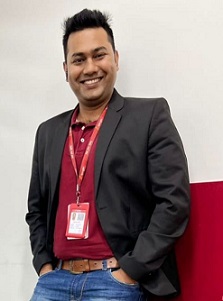
Christmas is a beautiful time as it celebrates the birth of Jesus Christ. It is also a time to reflect on the spiritual aspects of the holiday, such as peace, love, and goodwill amongst us.
The story of Christmas is one filled with joy, hope, and the celebration of the birth of Jesus. The Bible tells us that Jesus was born in Bethlehem, to a virgin named Mary and her husband Joseph. According to the gospels of Matthew and Luke (In Bible), three wise men from the East were led to the stable where Jesus was born by a star in the sky.
The wise men brought gifts of gold, frankincense, and myrrh for the baby Jesus. This is the origin of the tradition of giving gifts at Christmas. Shepherds from the nearby fields were also visited by an angel and told of the birth of Jesus.
Christmas is celebrated in many different ways around the world, with each culture having its own traditions and customs. Christmas is celebrated with decorations, gifts, carol songs, and special meals. Christmas trees are decorated with ornaments and lights, and Nativity scenes are often set up in homes and public places during the season.
The Christmas season is a time of joy and reflection, of hope and peace, of family and friends. This is a time to celebrate the birth of Jesus and to remember the true meaning of Christmas.
May your holiday season be filled with peace, joy, and love. May the New Year bring you health, happiness, and success.
Wishing you a Merry Christmas and a happy and prosperous new year!
My name is Muhammad Sanooj P. I am from the city of spices – Calicut, Kerala. I am working with SpiceJet’sChennai Airport Services team. Now, I would like to utilize the SpicyReflection platform to tell you something about myself.
I loved dancing a lot since my childhood and I have been participating in dance competitions in my school and outdoor programs since I was 6 or 7 years old. I believe it's a gift from God!
It was the king of pop Michael Jackson, popularly known as ‘MJ’, who dragged me to the world of dance. I dance because dance can change things and believe that "One move can bring people together; One move can make you believe there is something more; One move can set whole generation free".
In addition, I'm a guitarist focused in western music and chords. I've won for awards in the Kerala sub district competitions and school “Kalothsavam” competitions when I was studying in Higher Secondary.

I'm a person who loves to do solo exploring in different places, to see all those streets with variety of shops, street foods, the happiness of people and their culture, etc. I try to plan at least one solo trip a year and travel somewhere completely on my own. All these trips changed my personality in a very positive way and helped me become a more self-confident and open-minded person.
From a young age I wanted to be a great dancer. But growing up, I felt that I should do something more within the world of professional work. So, after successfully completing the Higher Secondary examinations, I started my graduation in BBA with Airline and Airport management. After the completion of my graduation, I got an opportunity to work with SpiceJet and now I am working as a CSE with SpiceJet. As I have to maintain these two sides of my personality, it would not have been possible without SpiceJet’s team support. SpiceJet as always helped me to learn how to find out the way to balance my professional life and also to pursue my hobby as well.
Today I’m very glad to be a member of SpiceJet and thank the entire team for always supporting me.
Mr. Muhammad Sanooj P



My name is Sandeep Subba and I was born and brought up in Darjeeling, a very beautiful hill station and also famous in the World as "The Queen of Hills", where I completed my academics along with three years of Diploma in Music Indian Classical (Vocal). In my family, my father Sri Deo Kumar Subba is a current employee of Teesta valley tea estate and mother SmtKarunaSubbais a retired tea garden employee. I grew up together with my elder sister in the tea estate.
Ever since I was a young kid I was extremely fond of music. In my school days I used to sing in my school functions and participate in many singing competitions. Though I belong to a family where there was no musical background, but still music has been a passion to me, as I started my musical career right from my junior school days! As the life moved on, I got an opportunity to join SpiceJet Airlines in the year 2019, from where I got an opportunity for more and more exposure in my musical journey.

I was blessed enough, as right after joining the SpiceJet I got an opportunity to participate in pan India musical contest in SpiceJet,“The SpiceJet Got Talent" held in Delhi 2019. It gives me immense pleasure in sharing you that I stood first and became the winner of the contest!
It has been always privileged for me to work in such a supportive organization where my colleagues have always been supportive towards me. Being in Airport Services I always get the opportunity to meet different renowned Singing legends,and recently I was appreciated by the legendry singer Mr. Abhijeet Bhattacharya himself!
See for yourself☺.: (video below)
I wish to keep continuing my musical journey and look forward for tremendous support in future also,which SpciJet has been giving me till now. Lastly, I would like to thank God for everything.
A few of my achievements:
1. SpiceJet Got Talent (2019) - Winner
2. The Voice of Nepal Contestant 2022 TV reality show
3. Kanchunjunga Singing Star Runner up
Here a couple of links to my songs, hope you like them!
Enjoy!
By: Sandeep Subba (CSE-IXB)
Kozhikode
History of Kozhikode:
Kozhikode, also known as ‘Calicut’, has a vast history with a lot of significance. Today, Kozhikode has been ranked as the second best city to reside in due to the history that is attached to it. Famous travelers like Vasco Da Gama and Ibn Battuta have left us with details about Kozhikode from as early as the 12th and 13th century.

Invaders had invaded Kozhikode, and finally with the National Movement and the fight for Independence, Kozhikode got its freedom. Kozhikode has been tagged with different names, like the ‘City of Spices’ and the ‘City of sculptures’. Today Kozhikode is known for the trade that it is doing with the European countries. If it wasn’t for its history, when Vasco Da Gama landed in Kozhikode and opened the trade route by sea, this wouldn’t have been possible. From more than 500 years, Kozhikode has been in trade with the Arabs, Chinese, Jews, Phoenicians and others.
Culture of Kozhikode:
The culture of Kozhikode is distinctively visible in its language, music, songs, and dances along this part of the Malabar Coast. The city of Kozhikode has contributed in great measure to the literary richness of the culture and language through the rendition of folk songs and ballads known as VadakkanPattukal. These songs commemorate the deeds of brave legends like the great TacholiMeppayilKunjaOthenan, the brave warrior who led many a battle against exploitation. He was called as the “Robin Hood of Northern Malabar”.

Songs are so ingrained in the Malabar culture that people from all religions have them as a favourite pastime wherein they sing the Mappilapattu and the Oppana. They are distinctive tunes that have lyrics in a synthesis of Arabic and Malayalam. The lilting music is haunting and has a mystic all of its own that resounds down the coastal sounds.
Among the dances that are the unique signature of Kozhikode’s culture are the Koothu, the world famous and renowned Kathakali, the Ottanthullal and the intrepid Kaikottikali. The performances of these dances all over are the classical renditions of mythological and legendary tales and other ritual dance like Theria and the Theyyam which will are performed during specific ceremonies.
Children and youth who want to devote their lives to the performance of Kathakali often do so with a sincerity and devotion that is hard to find anywhere. The traditional “Guru ShishyaParampara” is followed here. In this form of student teacher relationship, the teacher is everything for the student and vice versa.
Festivals of Kozhikode:


Kozhikode has its very own calendar of festivals all the year around. Some of the most significant festivals of the area are the Madapalli, Vadakara festival which is also called the Pooram festival held in March-April according to the Vikramic calendar every year. This festival is a great draw for devotees, pilgrims and tourists. It is held at the Arahkal temple in Vadakara. There is also the KokanarkavuBhagavathi temple situated at Mamuda in Vadakara. There are two major festivals held here in the months of March and April as well as November- December.

Kaliyatta Mahotsavam
There are the KadapallyKunkhom festival of Thera Pudupamam and then there is the KaliattaMahautsavam which is held in March in the temple of Vadakkara Shri PisharikavaBhagavathi. This temple is devoted to mother goddess and is located at Vigyan, Thikkody. The Shivratri festival is a grand occasion held every year for seven days in February- March. This celebration is conducted with much fun and gaiety at VettakkorumanPattaTempel which is located in the Fort-Bulussery’s precincts at Koyilandy as also the Sreekanteshwara Temple Festival held at Kozhikode. Then there is also the ThacholiManikkoth Temple Festival that is held in February each year.
The magnum opus of all festivals of Kozhikode is the grand Malabar festival which encapsulates the rich cultural heritage and traditions of Kerala. It is held every year between thirteenth to sixteenth January every year in the very heart of Kozhikode which is the ManachiraMaidan. This festival offers a panoramic view of the culture of Kozhikode.
Appavanibham Nercha
Idiyangara Sheikh Masjid in Kozhikode district of Kerala, is famous for its annual festival of AppavanibhamNercha. It is a popular festivity that people across the state celebrate irrespective of caste and creed. During the festival time, devotees visiting here present cultivated crops along with clothes and other offerings to the mosque. Apart from these, they also offer miniature forms of human body and organs to the mosque. There are various religious institutions and charity centres functioning under the administration of this mosque. Every day, thousands of believers throng the mosque to offer their prayers. It has been around 454 years since the custom of appavanibham started.

Idiyangara Sheikh Masjid

ManachiraMaidan
Foods of Kozhikode:

Sweetmeat lane
The city also has a strong mercantile streak to it, with the major vein of commerce being the MithaiTheruvu, a long street crammed with shops that sell everything from sarees to cosmetics, and house hotels to sweetmeat shops. The name MithaiTheruvu or SM Street comes from the sweet Kozhikode Halwa which was often called as the Sweetmeat by European traders. The multi-cultural mix of Kozhikode ensures that Onam, Christmas, and Id-ul-Fitr (the festivals of the Hindus, Christians, and Muslims) are celebrated with equal pomp, indulging in the local cuisine.
Kozhikode is famous for its thick, black, translucent Calicut Halwa. Every sweet shop, every bakery, every major store selling food items and packaged foods, sells the ubiquitous Calicut Halwa. The black Calicut Halwa is made very simply out of maida and sugar, palm jaggery, and is cooked in coconut oil.The other coloured halwas do not taste much different, even though the orange, white and yellow varieties are jazzed up with chopped nuts, elaichi, and jeera. Flavours are not added, only colours. There is a banana halwa, too, which is made in vanaspati and not oil. The halwa is an integral part of Kerala cuisine.
Kozhikode cuisine also offers fare for every palate. Vegetarian fare includes the sadya (the full-fledged feast with rice, sambhar, pappadum, pickles and seven different side dishes). However, the non-vegetarian food offered in the city is a unique mix of Muslim and Christian preparations. Some popular dishes include the Kozhikode Biriyani or the Malabar Biriyani, Ghee Rice with meat curry, a whole host of sea-food preparations (prawns, mussels, mackerel, sea-fish) and paper thin Pathiris to provide accompaniment to spicy gravy. Other well-known Kozhikode specialties are crisp and wafer thin Banana Chips made from coconut oil, and the Kozhikode Halwa.
Places to Visit:


Kozhikode Beach and Kadalundi Bird Sanctuary


Valayanad Devi Temple and Beypore Beach


Srikanteshwara Temple and Thalikkunu Shiva Temple


Thusharagiri Fall and Kakkayam Dam
Connectivity:
By Air- through Calicut International Airport

By Rail:

By Bus:

We welcome all to come to and enjoy the hospitality, sights and unique culture of Kozhikode!
By: Team Kozhikode

कोशिश कर, हल निकलेगा
आज नहीं तो, कल निकलेगा.
अर्जुन के तीर सा सध
मरूस्थल से भी जल निकलेगा.
मेहनत कर, पौधों को पानी दे
बंजर जमीन से भी फल निकलेगा.
ताकत जुटा, हिम्मत को आग दे
फ़ौलाद का भी बल निकलेगा
जिंदा रख, दिल में उम्मीदों को
गरल के समंदर से भी गंगाजल निकलेगा.
कोशिशें जारी रख कुछ कर गुजरने की
जो है आज थमा-थमा सा, चल निकलेगा
कोशिश कर, हल निकलेगा
आज नहीं तो, कल निकलेगा.
(Inspired By: AnandParam)

सुख दुःख हर पल में देता है जो साथ !
सीने लगाकर दोस्त बनकर करता है जो बात
मन हो विचलित फिर भी निश्चल रहता है
यह जहान उसी शख्स को पिता कहता है !!!
खुद रहे मुश्किलों में बच्चे को आंच ना आने पाए
बेटा हो मोटरबाइक पे बाप साइकिल चलाए
अपना सब कुछ लुटा के मांगे कुछ नही जब आए बुढ़ापा
आपकी हो हमेशा लंबी उमर जुग जुग जियो "पापा"
कंधो पे उठा के अपने मुझको सबसे ऊंचा बना या
जितना भी कमाया खुद से मेरे भविष्य पे लगाया
आज यह पेड़ उगा है जड़ों में पानी दिया है आपने
मेरा खुदा भगवान अल्लाह सब है पिता जी आपमें
शब्द शायद बयान ना करे आपकी बलिदानी को
हे भगवान ! लंबी आयु देना जग के सारे पिता जी को

Smile, because you are beautiful
Smile, because you are strong
When life gets tough on you and pull you down
Smile and keep fighting and don’t get drown
You are a warrior, always remember it
So pick up your shield and Smile at it
Focus on your goal and march towards it
There will be situation when you fall in a pit, but keep marching
You may have hurdles in your journey, just don’t give it
Just keep Smiling and let the world guess the reason behind it.










































































































Mr. Naveen Pathak (Duty Manager – GSD)
Team –Durgapur
Mr. Sumit Sharma (ATQ)



